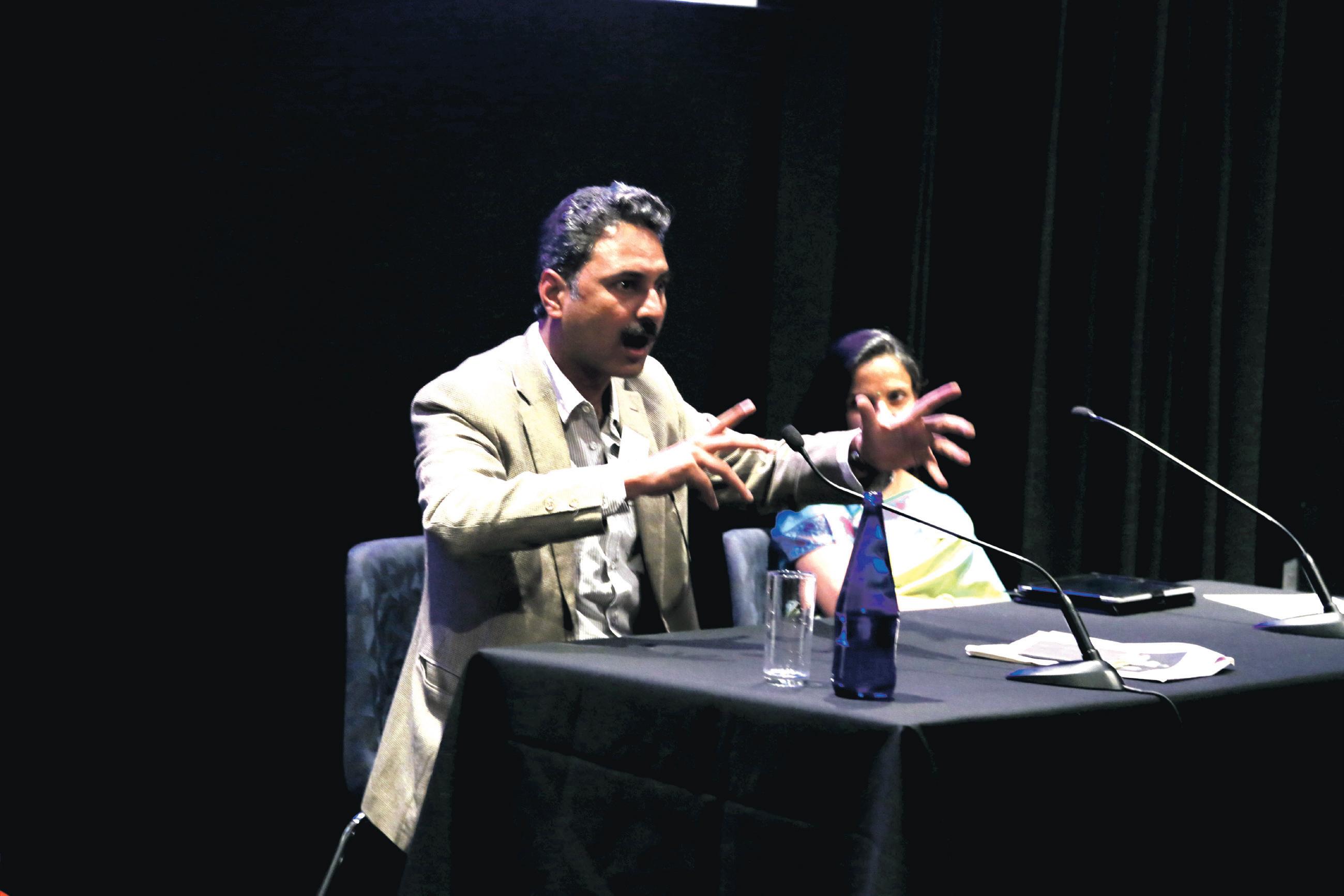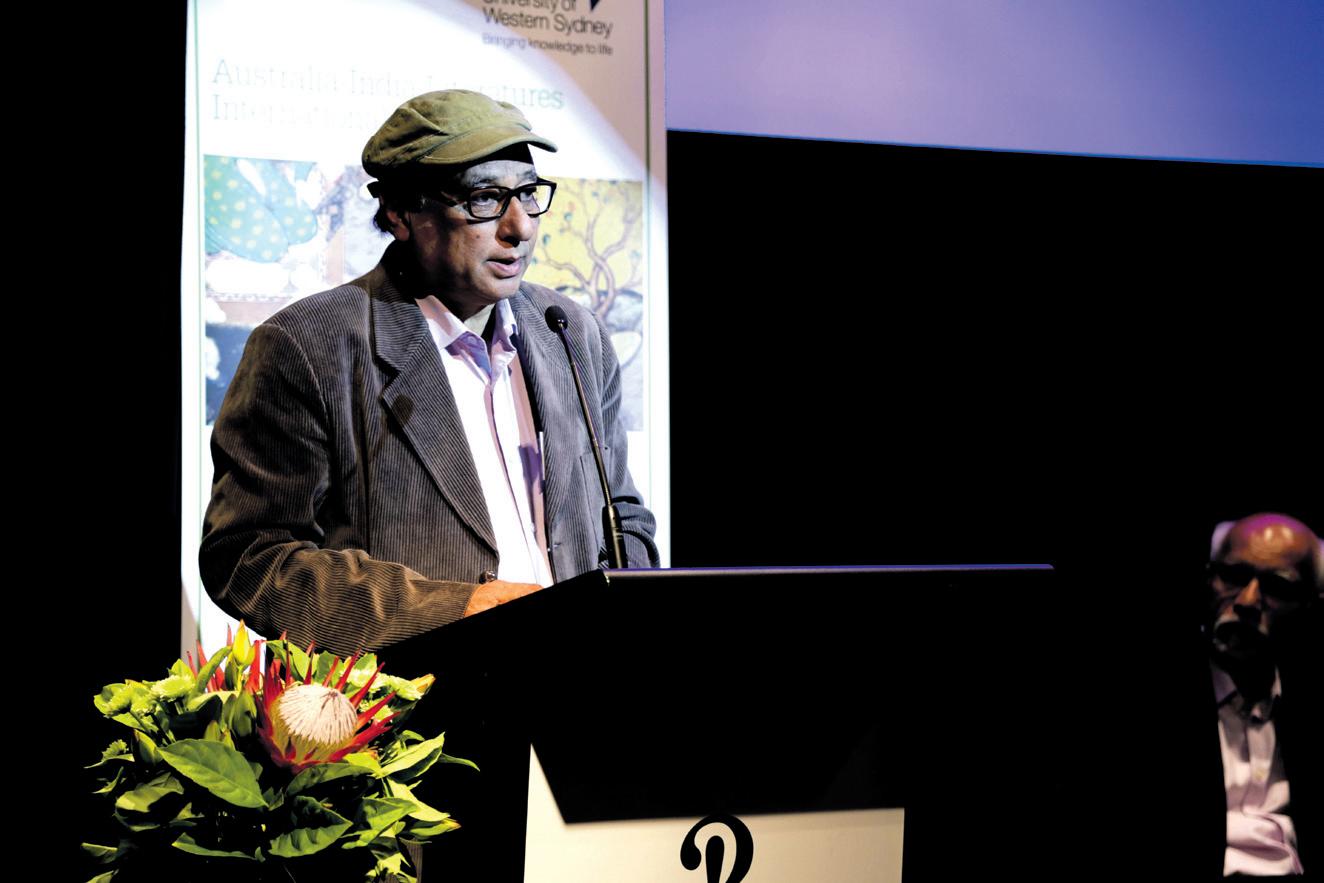
3 minute read
festivalWriters
from 2012-09 Sydney (2)
by Indian Link
multilingual, with almost 400 languages spoken here by people of 270 ancestries. With the backing of the WSRC at UWS, and its very supportive director Prof Anthony Uhlmann, she was spurred onto action.
“I came to this country four years ago with the usual stereotype of it being a monolingual nation. But by simply taking a train, I would encounter the sounds and languages from all corners of the world in all their energy and urgency,” she revealed. “I was increasingly aware of the many indigenous languages that resound in this continent. Even as I enjoy the spectacular style and success of Indian writing in English, I knew that I wanted to showcase vernacular Indian literature in all its richness. Most of the world knows and celebrates Indian writing in English, but does not really have any sense of the breadth and depth of its 22 official regional languages and 300 dialects, or the literatures that flourish in them. This is what I wanted to bring to Australia. AILIF is a coming together of these soundscapes, these multifarious tongues of the world, from my home country to this one. The scale was large to begin with; but it was astonishing to discover the many Australian voices I found in the process of bringing my two worlds together. I knew that I would have to pick and choose between the Indian languages, but doing the same with Australian literature was even more difficult, given the range of established and equally talented emerging voices I kept finding”.
Potent perforations
NS Madhavan, the muchadmired Malayalam writer, in his presentation at AILIF, memorably spoke of the Malayalam language as being perforated. The image of a perforated language, bringing to mind the borders of the old dot matrix printer paper or a fishing net, is so potent that it immediately lays bare the primacy and inevitability of perforation in human existence, as is in the natural world around us. It reminds us that like Malayalam, our lives, stories, and indeed all our languages are perforated, full of necessary and welcoming holes, where currents of influence from the East, West, North, and South, from above, from below, from all around, may blow in and blow out, endlessly regenerating and reshaping the very holes themselves.
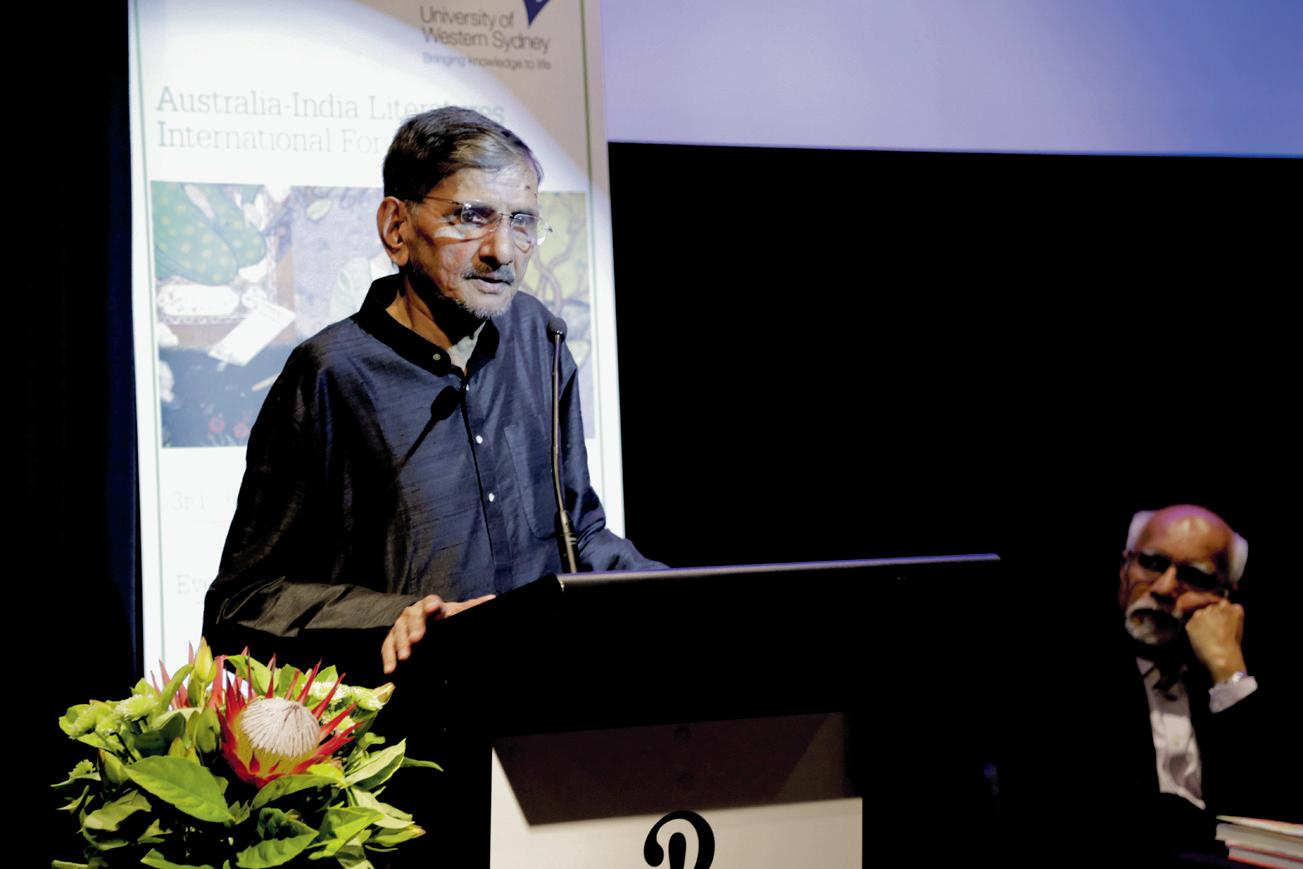

For those of us involved with creating new stories of Australia’s multicultural reality, the idea of perforations also reminds us of the primacy of diversity, and we applaud the role played by AILIF in celebrating this.

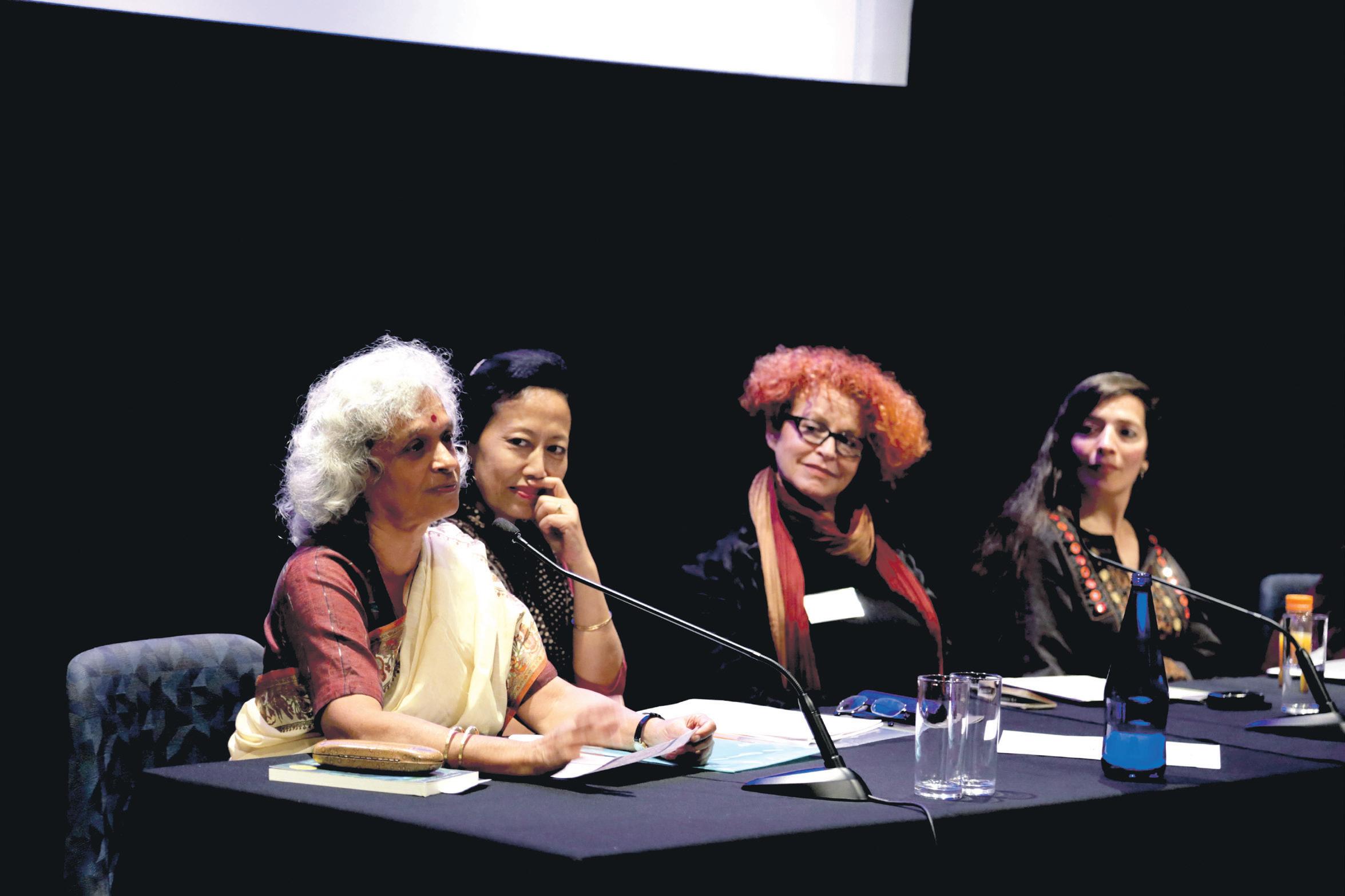
“AILIF is a salutary reminder that like genetic diversity, we need linguistic diversity, or else the human tongue will wither away and perish like a single strand of DNA,” said Mridula. “At a time when Asia is becoming increasingly important to Australia, and Indian migration is on the rise here, it is important to remember that India exists in myriad tongues, religions, cultures and modalities. Indian writing in English usually offers a metropolitan view of the contrasts and contradictions of the vast subcontinent. Vernacular literature offers a valuable way of understanding these nuanced multiplicities of India and opens the window to a textured, layered world”.
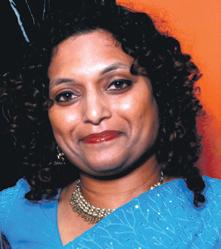
She went on, “Outside of cricket, Australia occupies a limited space in the Indian imagination. As bilateral relations between the two nations increase in coming decades, it will be critical to understand what makes this island nation tick. What better way to enter this world than through its aboriginal, indigenous and multicultural literatures, which tell unique stories about the nation to itself and the world?”
The other thing about perforations is that they can erase boundaries and facilitate exchange. Mamang Dai from Arunachal Pradesh reminded us about the numinous exchange between the human and the non-human, of talking to the land and listening as the land talks back. Bem Le Hunt, the Indian-English-Australian writer of three acclaimed novels, reminded us of those primal perforations between fact and fiction itself.
“The minute you write about a place it becomes fictional,” she said.
Prabodh Parikh’s enchanting presentation on the art of Tagore pointed to exchanges within the self, to the overflow of self while erasing the self. Mahmood Farooqui’s enthralling lecturedemonstration of Dastangoi, an ancient form of epic storytelling in Urdu, pointed, among other things, to perforations of formal conventions to revive and reinvent fading performative forms. Sharon Rundle and Meenakshi Bharat have been creatively perforating literary borders between India and Australia with their muchcommended edited anthologies of short stories by Indian and Australian writers, Alien Shores (2012) and Fear Factor: Terror Incognito (2010).
Dhoti borders and other challenges
AILIF was also a space where the dirt could be gathered from under the carpet and brought once more, into the light. CS Lakshmi (Ambai) recounted the times when she was used to being patronized and dismissed by male writers who would complement her on her looks or her clothes, rather than on her writing. So she decided to give them a taste of their own medicine, saying, “The border of your dhoti is really beautiful! Where did you buy it? I would also like to buy one for my husband.”
The appreciative laughter from the audience did not mean that women writers scorn genuine and well-phrased compliments; instead that such compliments must not come at the expense of recognizing and valuing the actual writing itself.
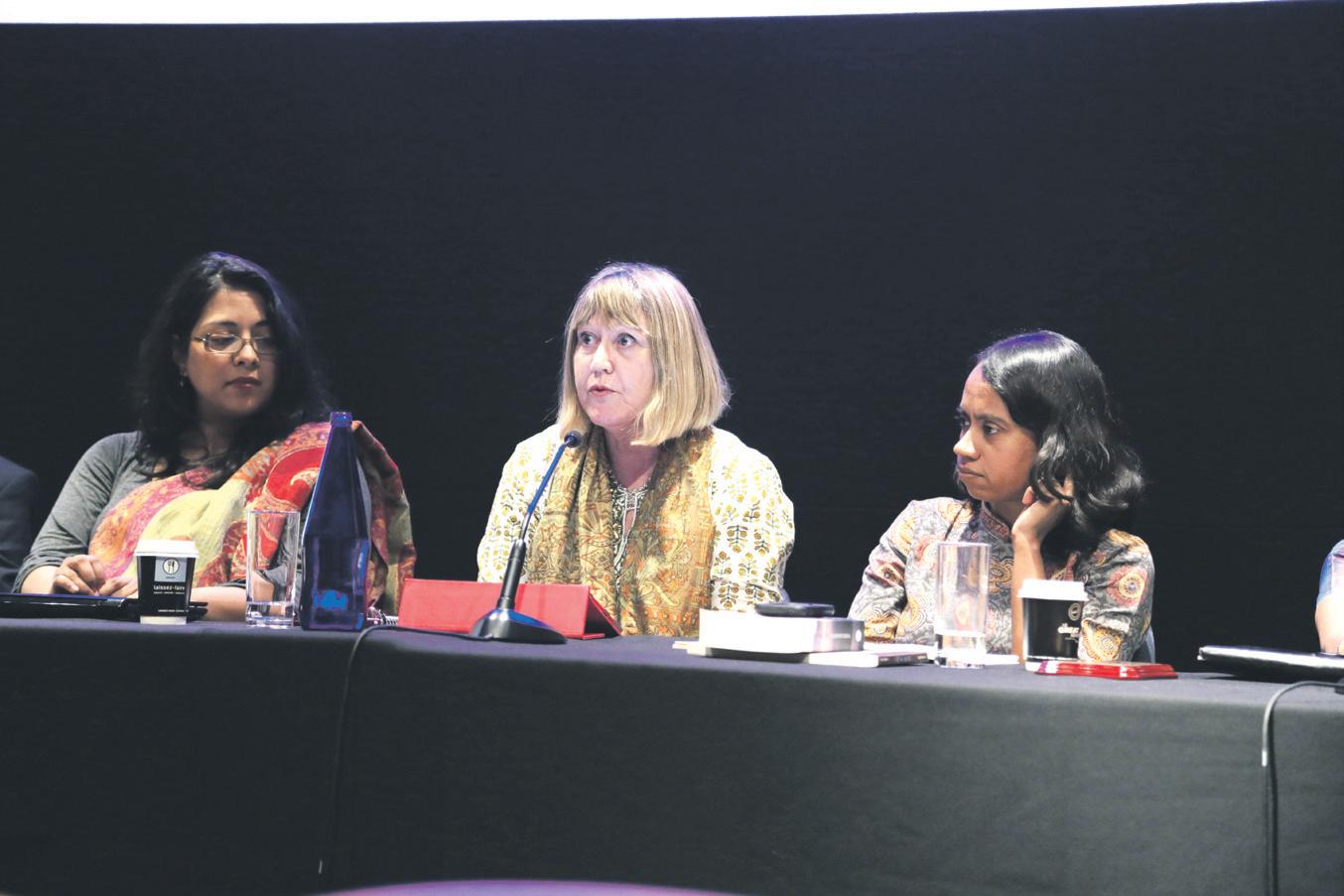
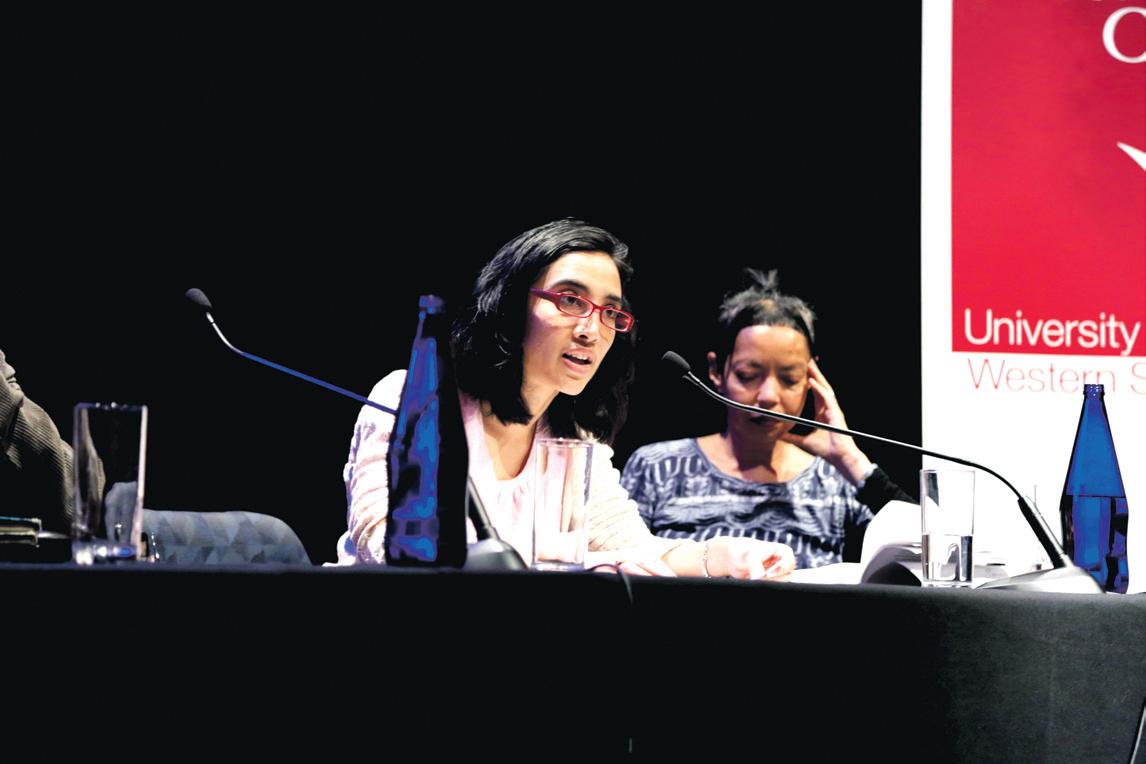
When Gogu Shyamala spoke very movingly and with fierce
